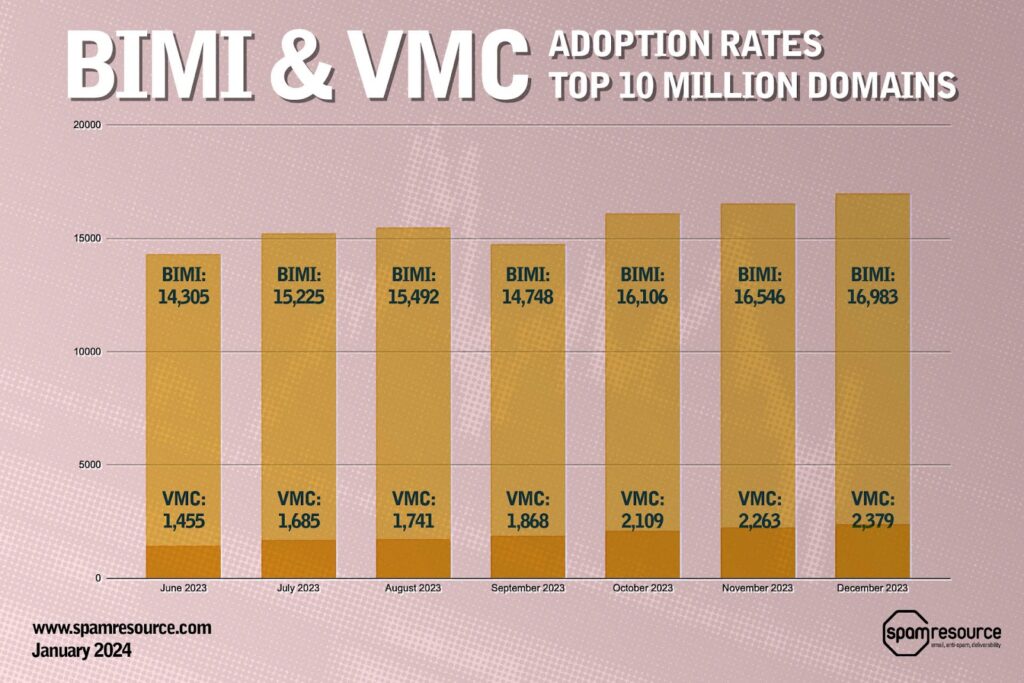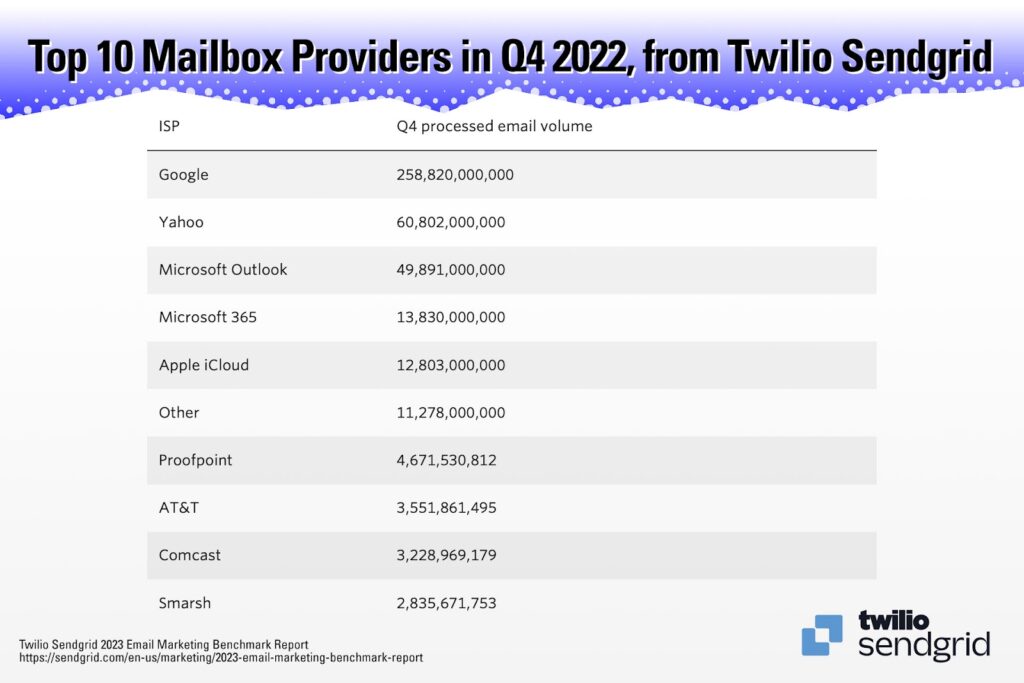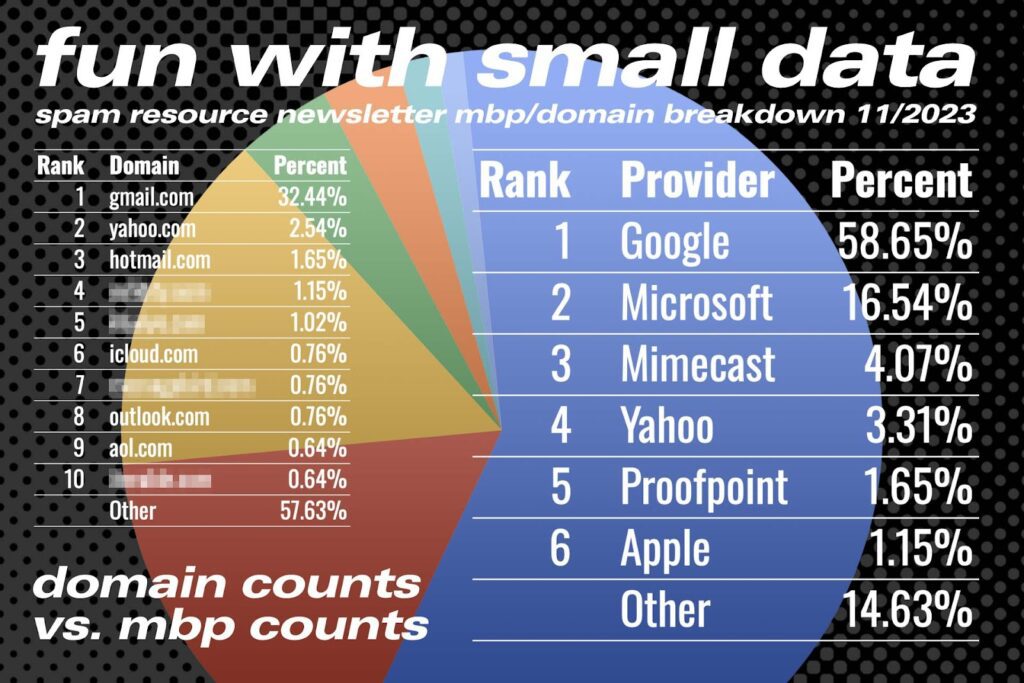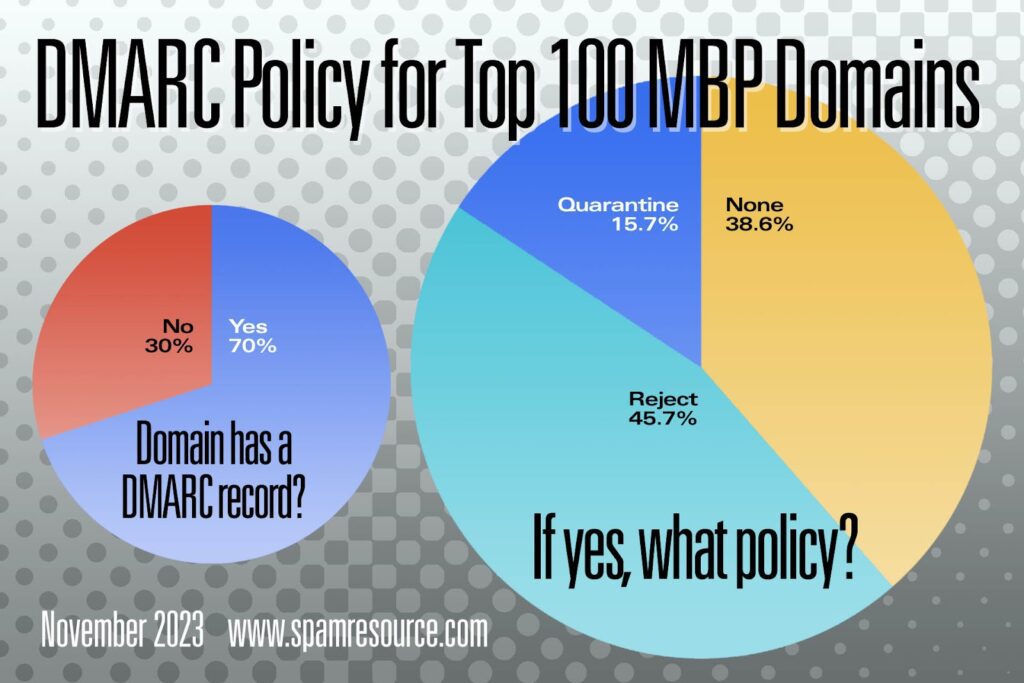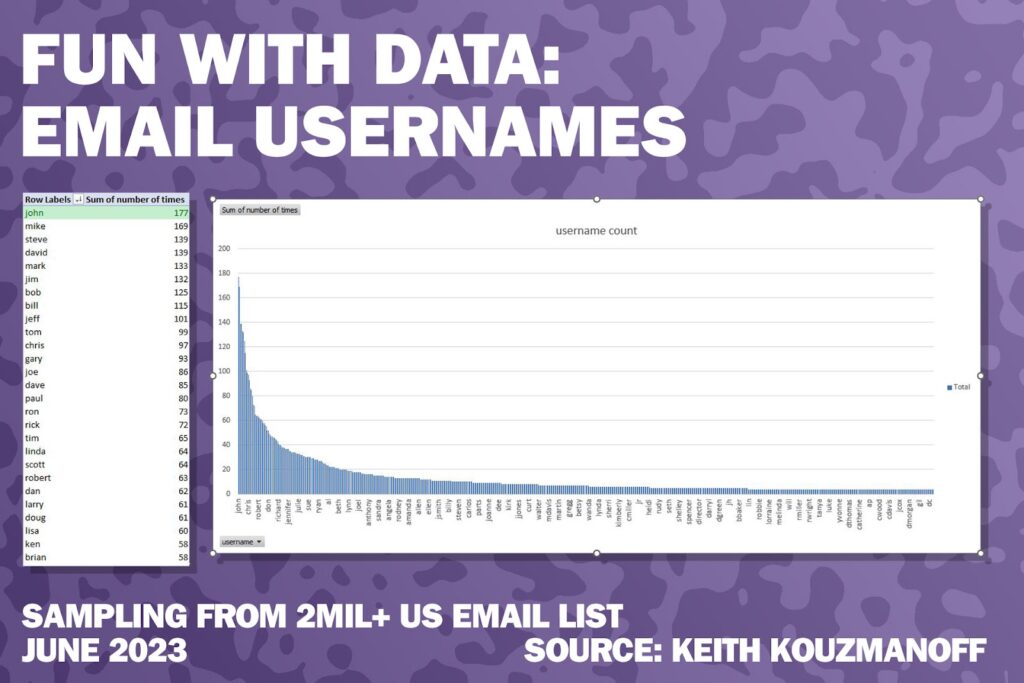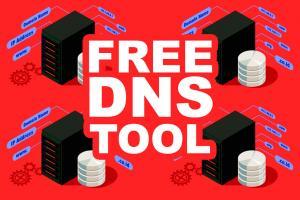Data
It all starts with a list of top domains. Top ten million, in this case. Of those top, around 12% of them have published a DMARC record. Of those, which ones have a BIMI record in place? That’s what this data shows. That means that it’s a percentage of a percentage of an arbitrary measure of “top domains.” But hey, we can still have fun with this — sort of questionable data set, so let’s do that! BIMI logo adoption is growing in this data set. Perhaps not exploding like gangbusters, but it is still good to see it growing, from 1.26% of top domains up to 1.38%. Today, that’s nearly 17,000 domains (of that top 10 million) that have published a BIMI record. From June through December 2023, the rate at which BIMI-publishing domain owners also implemented a Verified Mark Certificate (VMC) rose from around 10% to around 14%.
It’s time for some more fun with data! How broadly has DMARC been adopted? It’s a complex question and the answer is “it depends.” Many good senders have already implemented it — but based on Yahoo and Google pushing for it this year, it has clearly not been adopted widely enough for it to be considered a “must have” for every domain that sends mail. (And let’s not forget about domains that don’t send mail.) Every month, I take a peek at the top 10 million domains, logging various bits of DNS so that I can do later analysis. One of those data bits is: Does this domain have a DMARC record? Surprisingly, you can’t assume that the answer is yes. Though you can see that DMARC adoption is slowly nudging upward, only around 1.23 million domains (out of the top ten million) have a DMARC record in play. Now…this
Twilio Sendgrid (just?) released their ” 2023 Email Marketing Benchmark Report ” and it’s chock-full of baseline and quartile metrics for you to refer to when ranking your own marketing efforts. Here and there a stat might seem a bit weak (5% open rate at best?) but when you take every industry and vertical together and mix it all in a blender, you’re probably going to blend away some of those edge cases. The data is actually from 2022 — not sure why it’s effectively a year delayed or if I missed it before (?) but it’s a fun read, nonetheless. Thank you, Twilio Sendgrid, for sharing this! You know how much I love to stack rank mailbox providers to help define the size of the mailbox universe — I’ve done it with my own small data, and I’ve linked to others summing up their own data, but it’s nice
Sometimes I’ve got big data to share, and sometimes I don’t. Since I don’t have big data today, I thought it would be fun to pause and take a look at a small bit-o-data to see what we all can learn from it. In the graphic above, you can see a breakdown of the top domains and mailbox providers as measured from my tiny little Spam Resource newsletter list. Just under 800 subscribers at the moment. It’s a niche list and different people with different audiences are going to show a different breakdown of domains and providers, but still, I see a lot of the same domains and providers that other folks see. A few notes: I organized the data both by domain and by provider. See how this changes things. I guess my newsletter would pretty much count as a B2B newsletter, as my target audience is email senders
I’ve got just a tiny slice of data for you today. I took the top 100 (US) mailbox provider domains, as measured by mail sent to them, and looked for DMARC records. Do they have a DMARC record? And if so, what is the DMARC policy? Things look good from this angle. Seventy of those top 100 domains do indeed have some sort of DMARC policy in place. Of those that have a DMARC policy in place, just over 60% of those domains have a restrictive (p=quarantine or p=reject policy). This is particularly timely given that Gmail’s upcoming requirements say you should not impersonate (send as) gmail.com in your from address. Based on how internet service providers (ISPs) and mailbox providers (MBPs) are moving to respect DMARC policy, that restriction also applies to a good two-thirds of the top MBP domains. Remember: Your from address should only contain a domain
Time for some more fun with data! This time, courtesy of Senior Email Consultant Keith Kouzmanoff, who kindly shared this fun data sample, breaking down how many times each common username appeared in a sampling of email list data containing more than two million email addresses. Who’s number one? It’s john@. Congrats, john@, you’re the most popular email username.Here’s the top ten:John@Mike@Steve@David@Mark@Jim@Bob@Chris@Gary@Joe@Darn it, I thought I (al@) was number ten, but I realize that I misread the chart, and I’m much further down the list. Oh, well. Regardless of my own ranking, thanks to Keith (who also didn’t make the top 25, ha ha) for sharing this data. I’m not sure what I’d do with this from a marketing perspective, but it’s fun to visualize, regardless!Source: Keith Kohzmanoff on Linkedin
Let’s have some fun with numbers, shall we? Why don’t we take a list of the top ten million domains (found various places online) and scan the DNS for each of them to look for DMARC records? Good thinking, because that’s exactly what I just did!Here’s what I found.Of the top ten million domains, about 1.1 million (11%) of them have published a DMARC record. I suspect good growth over time here, but I don’t really have backward looking data to compare it to. We’ll see how this grows over time.Looking at the mix of DMARC policies being published, I see that about 61.5% publish “p=none,” 20.5% publish “p=quarantine,” and the remainder (about 18%) publish a “p=reject” policy. DMARC.org has tracked similar data — though not the same data set, but compared to theirs, I’m seeing that a higher percentage of domains publishing a strong (aka “reject” or “quarantine”) policy
It’s infographic time! This one breaks down the top 25 mailbox providers in the UK, as measured by this methodology:Any domain in the “top 10 million domains” (as measured by various online tools),And that domain name ends in .uk, the Internet country code top-level domain (ccTLD) for the United Kingdom,Analyze and roll up counts of all the MX records/email hosting for all of those domains;And thus, we have how many “top 10 million .uk domains” each of these mailbox providers hosts,Which probably makes this breakdown mostly B2B-oriented, and B2C mail tends to be more oriented toward many users at a small number of domains, and very few of these domains are going to be freemail/webmail domains.This ranking by number of domains is not quite the same as noting how much email traffic (or how many messages) each service handles, inbound or outbound, but’s I don’t have access to that, do
Do you like cookies? Well, of course, everyone does. Now imagine that you’ve got bitten by the “Cookie Monster” and get the Cookie Curse. The only way to go on with your life, work, and productivity is by continuously eating cookies. You can’t get enough of them, and now you need to store plenty of them. To store your cookies, you partner up with a cookie bank (because its service is free of charge). But the catch is you don’t get to own the cookies. The rules are simple: you can eat them whenever you want, but you can’t take them with you. You can’t even change your cookie bank without losing them, and you’re left in the dark about what the actual bank does with them. Will they resell it? Or worse, what if they start eating your cookies to try to perform as well as you? Ok, let’s
Tracker blocking rates are as high as 26%, and ad blockers show an overall global rate of up to 43%. We see the highest rates on tech-focused pages simply because those users are more aware of the functionality and impact of tracking and third-party cookies. And of course, all industries are affected by this trend. This blog shows three alternatives to conventional tracking to significantly improve data quality and reliability while being fully GDPR-compliant. How Traditional Tracking Works Don’t worry: we know you’re aware of conventional tracking. But let’s refresh your memory, to better understand the difficulties and where we see the old system struggling. Ever since web tracking was established, it has worked in a very similar matter. When a page is loaded, an invisible pixel (yes, an actual image pixel) implemented on the page requests the server to be loaded – indicating that the page has been

